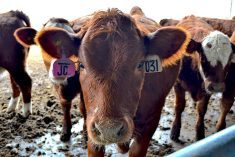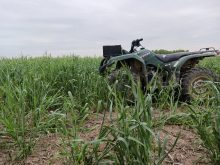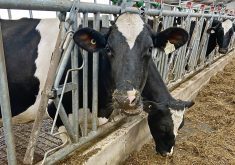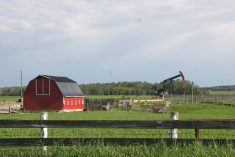More than 100 cattle ranchers southeast of Cardston are reeling from massive calf death losses following two major snowstorms.
Tim Romanow, rural extension specialist for Cardston County, said a second wave of deaths hit producers now as pneumonia and scours took a toll on calves that survived the actual storm. He said three major ranches in the Del Bonita area – McIntyre Ranching Co., Remington Ranch and Deseret Ranch, probably lost more than 100 animals each.
Still harder hit are smaller-scale ranchers who lost 10 to 20 per cent of their calf crop, and much of their potential revenue after feeding those mother cows all year.
Read Also
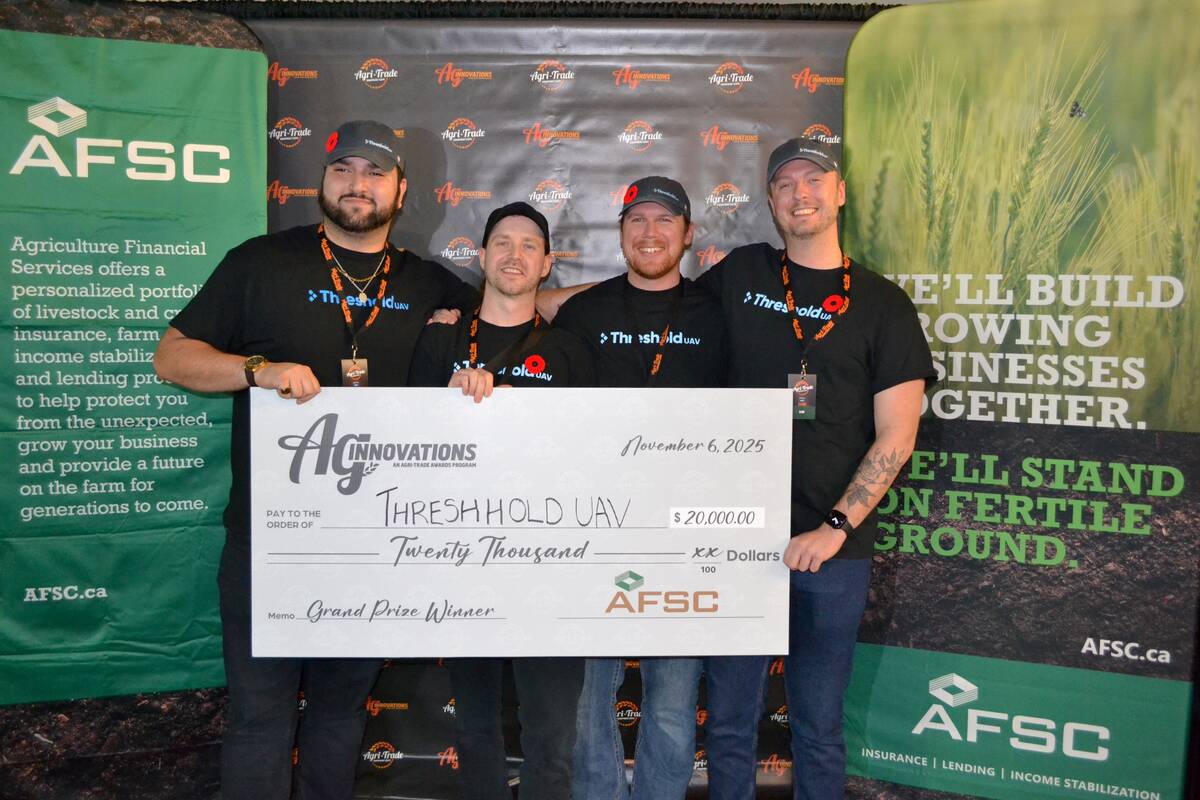
Swarm mapping the future of drone imagery
Calgary-based Threshold UAV wins the $20,000 top prize at Ag Innovation Awards for their swarm drone mapping.
Romanow said even some bulls and mature cows have perished, mostly animals driven by the storm and falling into dugouts or low-lying areas in the middle of fields that suddenly filled with water. He said one rancher had a steel big bale feeder, which normally holds one big hay bale in a low spot in the field out of the wind. In a short time, rain and melting snow filled that low spot to within a foot of the top of the six-foot high feeder. That rancher had already pulled 23 calves from the water, and six more floated to the surface, he said.
Romanow said the major problem in the Milk River Ridge area southeast of Cardston and south of Magrath was the earlier heavy rains which soaked the calves, most of them born on pastures or out on grass later than traditional early spring-calving operations. Then the snow and cold hit, and the wind simply drove herds into fences, causing death by animal crowding, or into low spots in a field or a dugout. Cardston County in southern Alberta declared itself a disaster area. County Reeve Cam Francis said that declaration allows the county to seek quick financial solutions to help affected cattlemen recover at least some equity. He said too often government programs, both provincial and federal, will pay out on programs, but often it takes a year before the money flows to producers. “These producers need money now,” said Francis, who remembers the big late-spring storm in 2002 that hit cattle herds hard also. “It is devastating for some of these producers who have lost up to 20 per cent of their calf crop.”
Romanow said one is his major concerns at this time of the year is when bears, wolves and coyotes are on the move seeking spring meals. He said the county had almost ended a pilot project covering about one-third of its boundaries launched to help producers get rid of dead winter stock.
Still counting losses
It may be weeks before McIntyre Ranch knows where all its cattle have landed after the storm, Ralph Thrall III, manager of the sprawling operation said May 12.
He said some cattle strayed up to 20 kilometres from the ranch boundary, many more shorter distances, while ranch cowboys were handcuffed by the blinding weather.
Thrall said some cattle escaped the ranch by walking over huge snowdrifts that buried barbed-wire fences in many places. In most cases, as cattle bunched up along a fence seeking shelter from the wind and snow, more simply added weight to the pack pushing the herd over or through the wire strands.
He said it was so extensive, he anticipates hiring customer fencing crews to complement ranch hands who will be busy with other vital weather mop-up work.
Thrall said he has received calls from many neighbouring ranchers, most inconvenienced by the strays mingling with their cattle. He said the tremendous understanding, while not unexpected, has been a tremendous plus for the entire McIntyre ranch family.
Faced with known deaths, mostly calves, Thrall said the loss is more than a bank ledger accounting. “Most of these cowboys work hard day and night to make sure the cattle are healthy and alive,” he said. “When they see dead calves, it creates a morale problem for them.”
He said he has seen weather which has driven McIntyre cattle from one ranch pasture to another, but never driven off the ranch.
“This is going to increase expenses and reduce revenues in a big way,” he said. “But it is ranching.”



